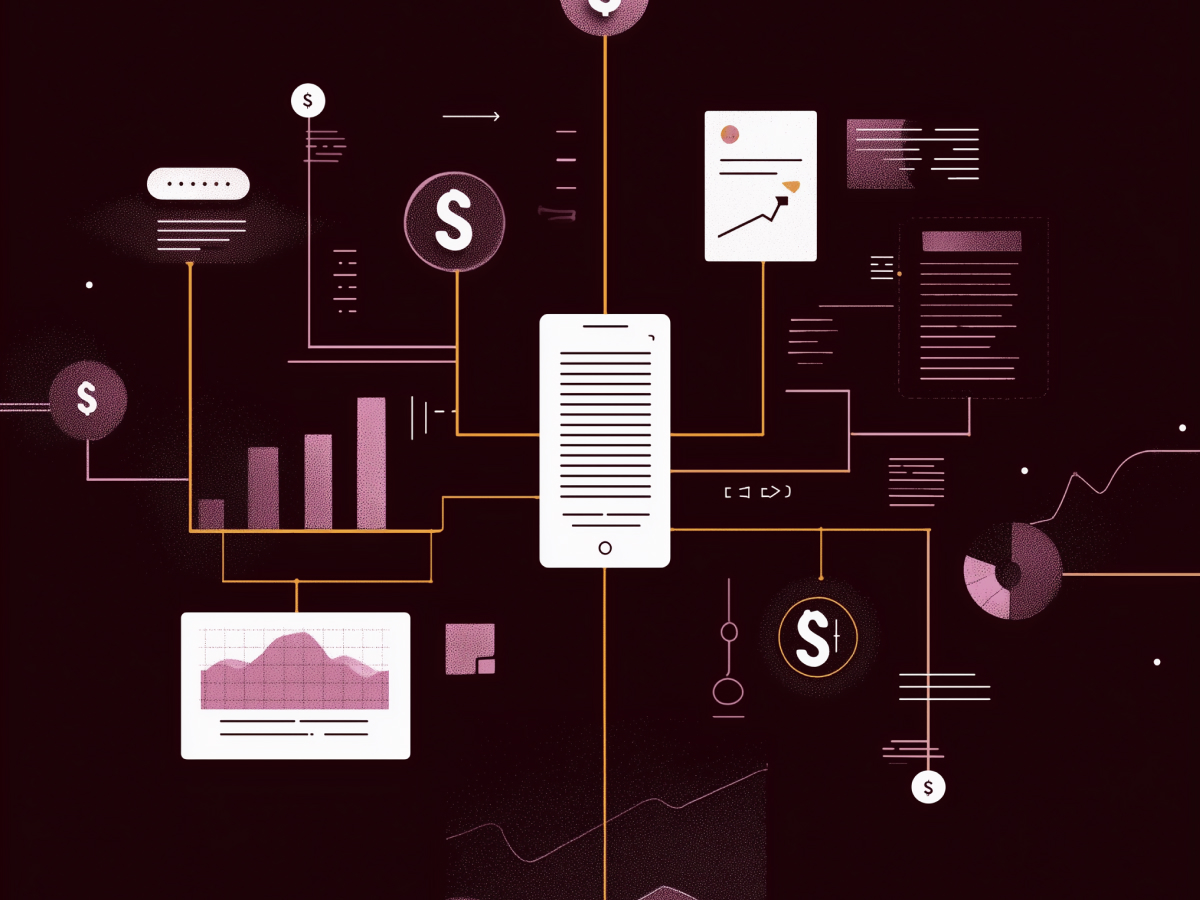AI-driven marketing demands robust governance
AI is reshaping marketing. It’s changing how we target, personalize, and scale campaigns. But many organizations still treat it like a plug-and-play tool. That’s a mistake. Failure to govern AI correctly doesn’t just cost you in operational inefficiency, it risks brand trust, customer loyalty, and draws the attention of regulators.
Any C-suite leader implementing AI in their marketing stack must start with governance. Clear ethical guidelines, active accountability, and oversight aren’t add-ons, they’re foundational. If your AI makes decisions you can’t explain or control, you’ve created more risk than value.
We’ve already seen examples. Meta’s AI-created character “Grandpa Brian” caught global attention this year, not pleasantly. The content was awkward, and users reported unpredictable chatbot behaviors, including falsehoods. It made people question whether the company had enough control over its AI systems. That kind of public backlash can take months, or even years, to recover from, especially if it touches on trust.
When you move fast with AI, you must also build control systems that move with you. Make no mistake: the companies winning in this space aren’t those deploying the most AI, they’re the ones deploying it safely, consistently, and transparently. Good governance isn’t a roadblock, it’s your runway.
Establishing ethical automation frameworks is essential
Ethics in automation isn’t a PR move. It’s a system requirement.
An automation framework grounded in ethical principles makes sure your AI doesn’t just work, it works appropriately. This means clear rules for what data the AI can access, how it explains outputs and decisions, and how you respond when algorithms fail to behave as expected. As AI moves deeper into customer-facing roles, content generation, purchase recommendations, client communication, the risks increase.
Your framework should cover three critical areas: transparency, privacy, and accountability. First, transparency. Your customer should understand when AI is involved and what it’s doing. No black boxes. Second, privacy. Data must be handled securely and fairly, with protections built in by design. Don’t treat compliance as your limit, it’s your starting point. Third, accountability. You need protocols for reviewing AI performance, identifying bias, and correcting wrong outcomes fast.
You can’t run effective marketing without trust. And trust is built when systems are predictable, explainable, and responsible.
The best systems integrate input from multiple teams, marketing, data science, legal, compliance. It doesn’t slow you down. It keeps you from crashing. This is how you align technical innovation with business value without losing ground on ethics, which are now market differentiators.
Transparency in AI-driven operations fosters consumer trust
If your customer doesn’t know how your AI is influencing their experience, you haven’t earned their trust, you’ve borrowed it.
AI-driven tools are shaping more of the marketing experience now than ever. Product recommendations, content delivery, customer segmentation, it’s all being done at scale through algorithms. But when customers start questioning why they’re seeing something, or whether what’s being offered is fair, they’re not just questioning your software, they’re questioning your integrity.
That’s where transparency becomes non-negotiable. You need to be upfront. Make it clear when AI is involved. Communicate what it’s doing and why. This doesn’t need to be an engineering breakdown, just simple, clear language that says how customer data is being used to create value. Transparency increases trust. It lowers friction. It boosts your performance because people are more likely to engage when they feel they’re not being manipulated.
Customers increasingly want to know who, or what, is making decisions in their digital experiences. That doesn’t just apply to financial products or healthcare. It applies to all sectors now. Not disclosing AI decision-making damages your credibility. It also creates legal vulnerability as regulatory pressures grow.
Being transparent with AI operations isn’t about overloading users with technical details. It’s about making your brand more human, even when the interface is not. When customers feel respected, they keep coming back. That’s a business outcome you can measure.
Embedding privacy-by-design strengthens ethical personalization
If you’re building AI systems without prioritizing privacy from the start, you’re rewriting the rules after the system has already shipped, which is weak leadership.
Ethical personalization doesn’t mean refusing to use data; it means using it responsibly. Privacy-by-design means the foundation of your system has data protection built in, not layered on afterward to patch holes. It accounts for customer control, high-value data handling, access protocols, and logging. These aren’t minor choices. They define your brand’s reputation and operating risk.
Forget the idea that privacy is just about keeping regulators happy. It’s now a clear market expectation. Customers expect data to be secure, used fairly, and processed within boundaries they understand. And when you meet that expectation, they give you permission to personalize deeper. They opt in willingly. That makes your entire AI personalization engine more reliable and legally defensible.
Marketers win more when they don’t cross lines. Privacy-by-design helps teams push the boundaries of personalization without overstepping trust. It doesn’t prevent innovation, it guides it. Personalization works best when the user gives explicit consent and feels the benefits.
C-suite leaders need to account for this right now. The cost of getting privacy wrong isn’t just fines, it’s lost market share. When consumers distrust your data practices, they disengage. In today’s market, dignity in data use isn’t just ethical, it’s business-critical.
Accountability measures are crucial in mitigating AI risks
Without accountability, even the smartest AI can become a liability fast.
If you’re putting AI into public-facing functions, especially in marketing, it needs to be monitored, audited, and corrected in real time. Systems learn. That means they can drift. If no one’s regularly checking output quality or identifying bias, a model that performed well on day one may be quietly damaging your brand six months later.
You need clear accountability structures in place. Regular audits should evaluate for bias, accuracy, and performance across different customer segments. Every unintended outcome, whether it’s poor targeting, ethical missteps, or customer dissatisfaction, needs a documented path for remediation. This isn’t just internal hygiene; it’s external defense. If regulation catches up to your system before your governance does, the blowback won’t just be technical. It’ll be reputational and financial.
Some organizations are already moving ahead of this. For example, as noted in the source article, teams are partnering with Responsible AI Offices specifically tasked with vetting AI initiatives from ethical and regulatory standpoints. This structure ensures AI use across marketing is subject to multidisciplinary scrutiny, not just engineered to perform, but audited to remain aligned with business values and public expectations.
You’re responsible for the decisions your AI makes. Saying “the algorithm did it” doesn’t fly. Have people in place to spot anomalies, flag risks, and refine models. Treat your AI like a system that requires active governance, not passive deployment. That’s how you scale with control, not chaos.
Maintaining human oversight enhances AI outcomes
AI’s productive capacity is real, but it doesn’t replace human judgment. You still need humans in the loop.
Autonomous models can make fast decisions. They can generate content, segment audiences, forecast outcomes, all with unmatched speed. But when those decisions impact reputation, ethics, or long-term brand positioning, removing human oversight is a critical failure. Automation without human context increases the likelihood of unintentional errors and brand misalignment.
That’s why the most effective AI programs bring cross-functional teams together. You need marketers who understand customer behavior. You need data scientists who understand the model architecture. You need legal and compliance experts who see the edges of regulatory exposure. Together, these teams ensure AI output is technically sound, ethically designed, and strategically aligned, right from development through deployment.
Having a human in the loop is not inefficiency. It’s insurance. It prevents bias from slipping through. It creates accountability in decisions. It gives your AI system domain expertise it can’t generate on its own. And when campaign results start rolling in, humans are still better at discerning the nuance behind behavior, sentiment, and real-world impact.
C-suite leaders should push for this structure. Build systems that allow AI to enhance output, but require human oversight before decisions impact customers directly. Balancing speed and strategic judgment keeps performance high and mistakes low. That’s operational leverage with risk control.
Balanced scorecards should reflect both performance and responsibility
If you’re only tracking marketing performance through engagement rates and conversion metrics, you’re missing the bigger picture.
When AI becomes a core part of your marketing system, you need new ways to measure success. That doesn’t mean replacing traditional KPIs, it means expanding them. Scorecards should include both productivity indicators and responsibility metrics. You need to know how your campaigns are performing, but you also need to know whether they’re building trust or eroding it.
In addition to campaign reach, click-through rates, and cost-per-acquisition, track trust scores, privacy compliance, and long-term brand sentiment. These indicators show how your AI is impacting customer relationships and how sustainably your strategies are scaling. If an AI-led campaign boosts engagement short term but reduces customer confidence, that’s a net loss. You’re growing at the cost of your reputation.
Full-spectrum measurement gives your executive team better insight into what’s working and what isn’t, not just at the tactical level, but at the brand integrity level. It also prepares your organization for increasing regulatory reporting requirements. Proactively putting systems in place to track ethical performance helps you avoid last-minute decisions under compliance pressure.
From a leadership standpoint, balanced scorecards show that your organization doesn’t just aim to optimize marketing, but to own the ecosystem of responsibility that comes with using AI across customer touchpoints. That alignment builds internal clarity and external credibility.
Responsible AI practices provide a competitive edge
The companies that scale AI responsibly are gaining more than productivity, they’re gaining market share.
This is not about slowing down. It’s about moving in the right direction with precision. AI systems that drive marketing performance while respecting privacy, earning trust, and maintaining transparency are creating stronger brands. They operate with fewer risks, deliver better customer loyalty, and are more prepared for compliance requirements that will inevitably tighten.
Responsible AI implementation now acts as a differentiator. Customers pay attention to how their data is used. Regulators are making transparency and fairness non-negotiable. Investors are watching for reputational risk indicators. That means AI systems can’t just perform well, they need to work within a defensible ethical framework. This is what gives modern marketing organizations resilience. When the landscape shifts, technologically, legally, or socially, a responsible foundation keeps your momentum intact.
Operational discipline builds long-term capability. When productivity, precision, and public trust scale together, you’re not just optimizing marketing, you’re building a competitive advantage that isn’t easily replicated.
C-suite leaders who understand this will drive the next wave of durable growth. Those who don’t will find that deploying AI without structure creates short-term wins at long-term cost. It’s your job to lead AI maturity, not just AI adoption.
Final thoughts
AI isn’t going anywhere, it’s reshaping how marketing works at every level. But speed without structure is high risk. For executive teams, the opportunity isn’t just to deploy AI tools, it’s to lead with discipline. Governance, ethics, and accountability aren’t compliance exercises. They’re business strategies that protect brand equity, increase customer trust, and ensure scalability under pressure.
Responsible AI isn’t slower. It’s smarter. It gives you control, foresight, and resilience in a rapidly shifting market. And the message is clear, leaders who build AI systems with transparency, privacy, and oversight aren’t just avoiding risk. They’re setting the standard.
This is where competitive advantage is being redefined. Not by who uses AI first, but by who uses it best.





